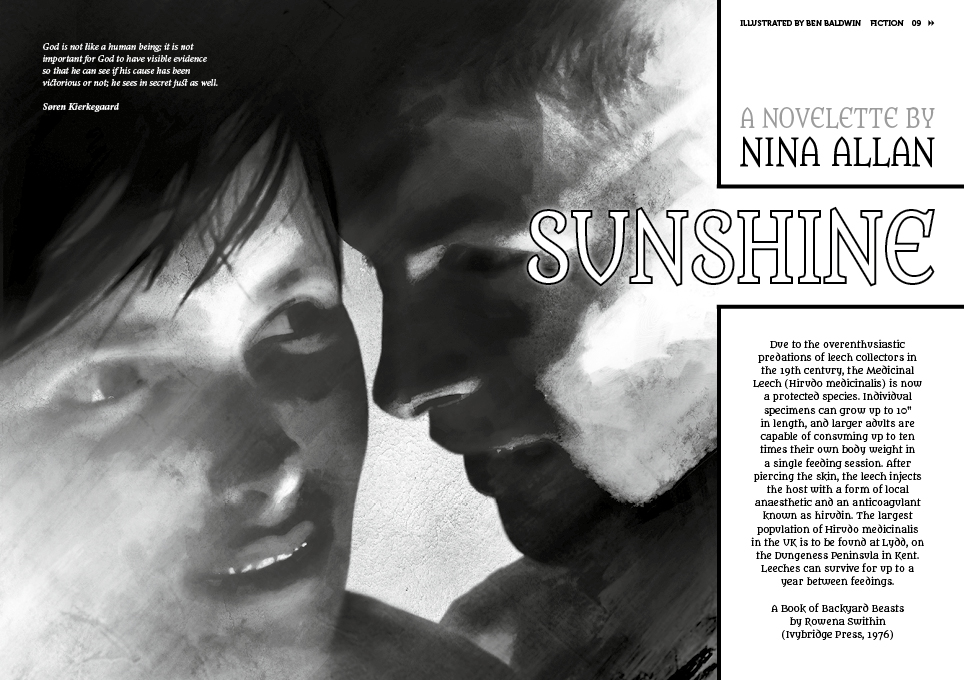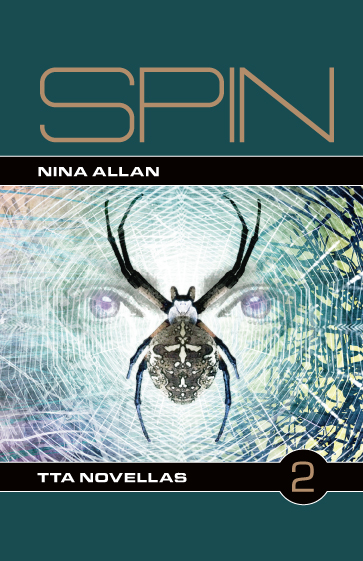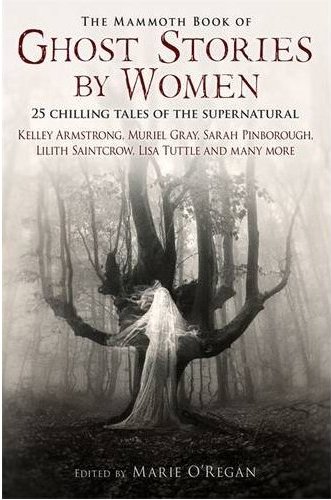In a recent blog post for The Guardian, Stuart Kelly asked us to ponder the question of horror fiction, and whether it was a genre doomed to literary hell. The post itself is interesting; even more so is the comments stream that follows, a discussion that also expanded sideways into further personal blog posts and on Twitter. If nothing else, it shows how this issue has the power to get people talking. I was struck in particular by a comment made by Jonathan McCalmont:
I really like the idea of horror lit but I’ve never found any I really liked.
Which he then extended by saying of a recently published and much-lauded commercial horror novel:
I thought the first half was cliche-ridden and the second half was just silly.
This certainly rang true for me. From personal experience I’d also add that almost all of the commercial horror novels I’ve tried to read recently have been rendered unsatisfactory, for me at least, by an identical fault: often graced with a compellingly readable beginning, they inevitably unravel into a farrago of ridiculousness, cliche and generic predictability in the second half. That this just happens to be the same lethal virus that has infected ninety-nine percent of commercial horror cinema can be no coincidence. Paradoxically, the danger for many new horror writers is that they grow up loving horror. They devour horror any which way they can, and in the process they grow used to a particular grammar of horror, a set of tropes that, like all tropes, were probably exciting once, but are now staid and safe. These writers repeat in print what they’ve seen on the screen because that’s what got them into horror in the first place. It’s understandable. It’s also threatening to make horror a laughing stock.
I grew up loving horror, and when I finally decided to start taking my writing seriously it was horror that I wanted to write. I lost count of the number of horror novels I got through in those first few heady years when I was rediscovering the genre and trying to work out where I fitted into it, if at all. Looking back on that period now, I can see that what I experienced was in effect my own mini, speeded up history of horror: in the beginning, everything seemed new, and thrilling, and just about the best damn thing I’d ever read. As I became more knowledgeable I started to discern recurring themes, a certain repetitiveness, a certain lack of freshness in approach that made me begin to worry that maybe horror was all used up. The final stage of this intensive period of discovery was a coming to terms with the fact that horror, more than any other genre, is actually a closed system, and that the only way of ensuring originality in horror is by busting out of it.
It sounds obvious to say it, but whereas science fiction and fantasy are abstract concepts, horror is an emotion, something you feel. Science fiction as a genre – and in this SF is no different from social realism or historical fiction – is an umbrella term for a whole gamut of varying approaches. It is a house of many mansions, many shades of dissenting opinion. Most importantly, it does not have a dominant, nay determinant, tone colour. Compare one hundred SF stories and there is room, in theory if rarely in practice, for one-hundred percent diversity. Compare a hundred horror stories and they will be bound together, to some extent at least, by the genre’s self-defining demand that it feast only upon itself.
If what we’re looking for in horror is originality, this is going to be a problem.
The logical extrapolation of this problem is that horror will be less widely read even than SFF, because large numbers of people will convince themselves from the outset that it’s not for them. “I don’t like being scared.” “All that monster stuff is stupid.” “I can’t stand blood and gore.” At least with SF, you might have a reasonable chance of persuading a non-initiate that it’s not all men from Mars now, that there’s all sorts of fascinating stuff they might be interested in – the ethics of cloning or human fertility or near-future scarcity or plain old crisis of identity, you know, just like in Dostoevsky’s The Double. It’s difficult to try convincing anyone that you can have horror literature without any horror in it. When I try telling non-horror buffs that the audience at FrightFest don’t all wear Texas Chainsaw T-shirts (well, we do, but that’s not the point), that the atmosphere is one of the friendliest and most inclusive I’ve ever experienced, that the level of discussion at the Q&As reveals an articulacy in the language and culture of cinema a hundred miles in advance of anything you’re likely to find in an average audience for, say, The King’s Speech, what happens is that they look at me and shake their heads: you’re just a horror nut, what would you know?
It’s an uphill battle, doomed to be lost because generic horror seems largely content to sit on its arse and not do very much other than talk to itself.
And yet there is no shortage of marvellous horror fiction out there, no shortage at all, especially if you’re prepared to look for it in more out of the way places. When people say horror’s dead, I say they’re reading the wrong stuff.
Peter Straub’s Shadow Land, Ramsey Campbell’s Incarnate, Patricia Geary’s Strange Toys, Mark Danielewski’s The House of Leaves, John Ajvide Lindqvist’s Handling the Undead and Stephen King’s The Shining are all brilliant horror novels, most of them probably familiar to horror readers. But Nicola Barker’s Darkmans is also a horror novel, so is John Banville’s Mefisto, John Burnside’s Glister, Helen Oyeyemi’s White is for Witching, Iris Murdoch’s The Bell, Patrick Suskind’s Perfume, Roberto Bolano’s 2666, Jonathan Carroll’s The Land of Laughs, M. John Harrison’s The Course of the Heart, Susan Hill’s The Beacon, Patrick McGrath’s Martha Peake, Hilary Mantel’s Eight Months on Ghazzah Street and Elfriede Jelinek’s The Piano Teacher. What is Jonathan Littell’s The Kindly Ones if not a horror novel? Or Margaret Atwood’s Alias Grace? If you’re secretly thinking that ‘literary horror’ is somehow a soft option, or ‘not really horror’, then go away right now and read Joyce Carol Oates’s mind-scorching Zombie or Gabrielle Wittkop’s extraordinary novella The Necrophiliac. One of the most original and striking voices in contemporary short fiction, Robert Shearman, is also one of our finest horror writers. The book that won this year’s Edge Hill Short Story Prize, Sarah Hall’s The Beautiful Indifference, contains four horror masterpieces. Stuart Kelly quite rightly mentioned the American writer Brian Evenson as a contemporary master of horror; recent collections from Paul Meloy, James Cooper, Margo Lanagan, Thomas Ligotti and Kelly Link similarly showcase modern horror in intriguing, diverse and strikingly original ways.
What unites all the above is 1) excellent writing and 2) the fact that these are books that make highly effective use of horror, but not horror exclusively. They are all, first and foremost, stories. Narratives. Experiments in novelistic form. Extended character studies. Subversions. Tales of madness. Explorations of situations or people or ideas or places that absolutely compel both reader and writer to find out more. I’d argue that Joyce Carol Oates’s Zombie is one of the darkest and most disturbing horror novels ever written. It got to me so much I almost couldn’t finish it, which has to be just about the highest compliment you could pay a horror novel. It has stuff in it that many generic horror writers would shrink from using. But what makes Oates’s book a masterpiece and raises it far, far above the level of the black-jacketed clones more commonly shelved under ‘horror’ at your local Waterstone’s is the sheer quality of Oates’s writing, her attention to characterisation and to those aspects of the story that do not directly inspire horror in the reader – in fact in the case of Zombie they inspire pity. One of the many things that makes Stephen King a writer rather than just a best-selling horror phenomenon is the fact that backstory, surface detail, sense of place, and the poetical rhythms of vernacular language matter as much to him as monsters, sometimes more.
This may sound controversial, but I believe that if you set out to write horror (as some say you should) with the sole aim of horrifying, terrifying, or penetrating the dark arse end of the human psyche then what you’ll end up with won’t be very strong. The books and stories I’ve referred to above were written, I would argue, for a whole variety of reasons and with a whole variety of inspirations as the starting point. That the reader will, in the course of reading them, be horrified, or terrified, startled out of their comfort zone or on occasion even feel that they are indeed penetrating the dark arse end of the human psyche (I defy you to read 2666 or The Kindly Ones and NOT feel something of that kind) is more or less a certainty; that this is a part, but never the whole, of their literary journey is a certainty also.
When a horror writer begins work on a new story, she should be thinking about the story as a whole and not just the horror. Above all, she should be ambitious. Because a certain depth of purpose is a prerequisite for interesting writing, and because dynamic writing, writing that lasts in the mind and stands the test of time is rarely monochrome. It contains a whole spectrum of tone colours.
Because horror should be deep, not cheap.
Since finishing work on Maree last month, I’ve been working on a couple of horror stories. One of them, which is really more dark fantasy I suppose than horror (although it does have horror in it), was more fun to write than anything I’ve attempted since ‘A Thread of Truth’. There was just something about the narrative voice that made it feel as if I was listening to the story as well as writing it. This doesn’t happen often but when it does it’s exciting. The second story, which I finished earlier today, couldn’t have been more different. Even though it – just – has an affirmative ending, its tone is so bleak, so sad that I found the story preying on my mind in a way that felt unusual and not a little disturbing. But I think that’s a good sign.
I’ll say more about these two stories in due course. For now, I guess what I’m driving at is that horror can be – should be – anything you want it to be. The only rule is to make it indisputably your own.




